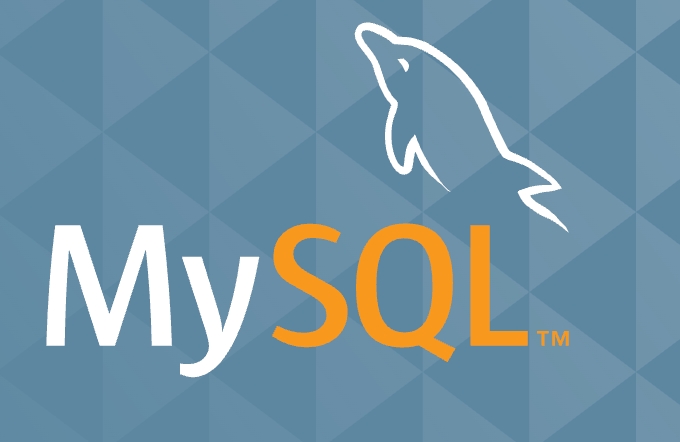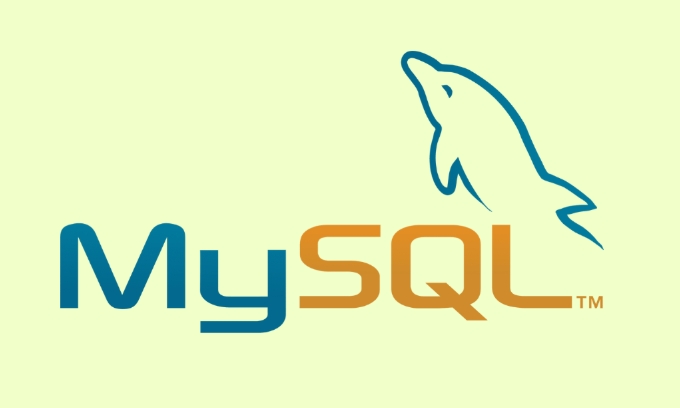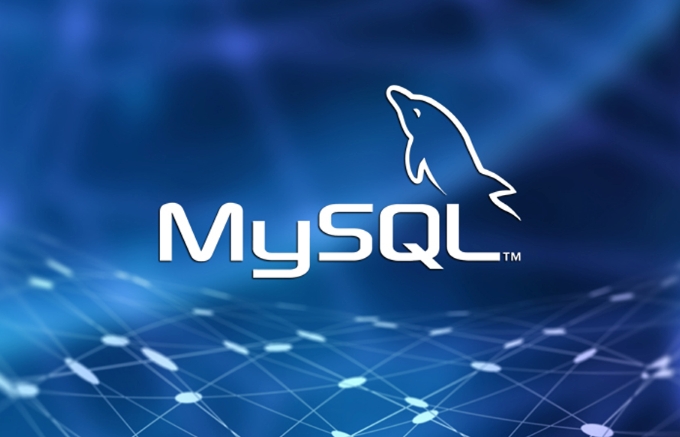To allow remote access to MySQL on Mac, first, you need to modify the bind-address in the configuration file to 0.0.0.0 or a specific IP, and restart the MySQL service; second, create or modify user permissions, use 'remote_user'@'%' or specify the format of the IP and perform GRANT authorization; finally, check whether the Mac firewall releases port 3306 to ensure that the network connection is normal.

MySQL only allows local connections by default. If you run MySQL on your Mac and want to access it from a remote (such as connecting through another server or computer), you need to make some configuration tweaks. The core is to modify MySQL configuration files and set user permissions.

Modify MySQL configuration file to allow remote connections
The MySQL configuration file on Mac is generally located in /etc/my.cnf or /usr/local/etc/my.cnf . The specific path can be viewed through mysql --help | grep 'my.cnf' .

Find a line like the following:
bind-address = 127.0.0.1
This means that MySQL listens only to local connections. You can comment out this line (prefixed with # ) or allow all IP connections instead:

bind-address = 0.0.0.0
This way MySQL will accept connection requests from any IP.
Note : If you just want a specific IP to connect, you can replace
0.0.0.0as that IP address.
Restart MySQL after saving:
sudo mysql.server restart
Create or modify user permissions to allow remote access
By default, MySQL users may only be allowed to log in from localhost. You need to create a user for the remote connection or modify the permissions of the existing user.
Enter the MySQL command line:
mysql -u root -p
Then execute a command like the following to create a user that can connect from anywhere:
CREATE USER 'remote_user'@'%' IDENTIFIED BY 'your_password'; GRANT ALL PRIVILEGES ON your_database.* TO 'remote_user'@'%'; FLUSH PRIVILEGES;
-
'remote_user'@'%'means that this user can log in from any IP. - If you only want to allow a specific IP, replace
%with that IP, such as'remote_user'@'192.168.1.100'. - The last sentence
FLUSH PRIVILEGES;is to enable the permission change to take effect immediately.
Check firewall settings
Even if you have changed the MySQL configuration, if the system firewall blocks port 3306 (MySQL default port), the remote cannot be connected.
On your Mac, you can check that the firewall is on in System Settings → Privacy & Security and make sure that external connections are allowed to be made to port 3306.
If there is no graphical interface, you can use the command to view the firewall status:
sudo pfctl -s info
If the firewall is enabled, you may need to add rule to release port 3306.
Test remote connection
Try connecting from another machine:
mysql -h your_mac_ip -u remote_user -p
-
-his followed by your Mac's LAN IP or public IP. - If the connection is prompted, check:
- Is MySQL running
- Is the bind-address setting correct?
- Whether user permissions allow remote login
- Is the firewall open to port 3306?
Basically these are the operations. As long as the permissions, configuration and network are correct, the remote connection can be successful.
The above is the detailed content of how to allow remote connections to mysql on mac. For more information, please follow other related articles on the PHP Chinese website!

Hot AI Tools

Undress AI Tool
Undress images for free

Undresser.AI Undress
AI-powered app for creating realistic nude photos

AI Clothes Remover
Online AI tool for removing clothes from photos.

Clothoff.io
AI clothes remover

Video Face Swap
Swap faces in any video effortlessly with our completely free AI face swap tool!

Hot Article

Hot Tools

Notepad++7.3.1
Easy-to-use and free code editor

SublimeText3 Chinese version
Chinese version, very easy to use

Zend Studio 13.0.1
Powerful PHP integrated development environment

Dreamweaver CS6
Visual web development tools

SublimeText3 Mac version
God-level code editing software (SublimeText3)

Hot Topics
 What is the default username and password for MySQL?
Jun 13, 2025 am 12:34 AM
What is the default username and password for MySQL?
Jun 13, 2025 am 12:34 AM
The default user name of MySQL is usually 'root', but the password varies according to the installation environment; in some Linux distributions, the root account may be authenticated by auth_socket plug-in and cannot log in with the password; when installing tools such as XAMPP or WAMP under Windows, root users usually have no password or use common passwords such as root, mysql, etc.; if you forget the password, you can reset it by stopping the MySQL service, starting in --skip-grant-tables mode, updating the mysql.user table to set a new password and restarting the service; note that the MySQL8.0 version requires additional authentication plug-ins.
 What is GTID (Global Transaction Identifier) and what are its advantages?
Jun 19, 2025 am 01:03 AM
What is GTID (Global Transaction Identifier) and what are its advantages?
Jun 19, 2025 am 01:03 AM
GTID (Global Transaction Identifier) ??solves the complexity of replication and failover in MySQL databases by assigning a unique identity to each transaction. 1. It simplifies replication management, automatically handles log files and locations, allowing slave servers to request transactions based on the last executed GTID. 2. Ensure consistency across servers, ensure that each transaction is applied only once on each server, and avoid data inconsistency. 3. Improve troubleshooting efficiency. GTID includes server UUID and serial number, which is convenient for tracking transaction flow and accurately locate problems. These three core advantages make MySQL replication more robust and easy to manage, significantly improving system reliability and data integrity.
 How to change or reset the MySQL root user password?
Jun 13, 2025 am 12:33 AM
How to change or reset the MySQL root user password?
Jun 13, 2025 am 12:33 AM
There are three ways to modify or reset MySQLroot user password: 1. Use the ALTERUSER command to modify existing passwords, and execute the corresponding statement after logging in; 2. If you forget your password, you need to stop the service and start it in --skip-grant-tables mode before modifying; 3. The mysqladmin command can be used to modify it directly by modifying it. Each method is suitable for different scenarios and the operation sequence must not be messed up. After the modification is completed, verification must be made and permission protection must be paid attention to.
 What is a typical process for MySQL master failover?
Jun 19, 2025 am 01:06 AM
What is a typical process for MySQL master failover?
Jun 19, 2025 am 01:06 AM
MySQL main library failover mainly includes four steps. 1. Fault detection: Regularly check the main library process, connection status and simple query to determine whether it is downtime, set up a retry mechanism to avoid misjudgment, and can use tools such as MHA, Orchestrator or Keepalived to assist in detection; 2. Select the new main library: select the most suitable slave library to replace it according to the data synchronization progress (Seconds_Behind_Master), binlog data integrity, network delay and load conditions, and perform data compensation or manual intervention if necessary; 3. Switch topology: Point other slave libraries to the new master library, execute RESETMASTER or enable GTID, update the VIP, DNS or proxy configuration to
 How to connect to a MySQL database using the command line?
Jun 19, 2025 am 01:05 AM
How to connect to a MySQL database using the command line?
Jun 19, 2025 am 01:05 AM
The steps to connect to the MySQL database are as follows: 1. Use the basic command format mysql-u username-p-h host address to connect, enter the username and password to log in; 2. If you need to directly enter the specified database, you can add the database name after the command, such as mysql-uroot-pmyproject; 3. If the port is not the default 3306, you need to add the -P parameter to specify the port number, such as mysql-uroot-p-h192.168.1.100-P3307; In addition, if you encounter a password error, you can re-enter it. If the connection fails, check the network, firewall or permission settings. If the client is missing, you can install mysql-client on Linux through the package manager. Master these commands
 How does InnoDB implement Repeatable Read isolation level?
Jun 14, 2025 am 12:33 AM
How does InnoDB implement Repeatable Read isolation level?
Jun 14, 2025 am 12:33 AM
InnoDB implements repeatable reads through MVCC and gap lock. MVCC realizes consistent reading through snapshots, and the transaction query results remain unchanged after multiple transactions; gap lock prevents other transactions from inserting data and avoids phantom reading. For example, transaction A first query gets a value of 100, transaction B is modified to 200 and submitted, A is still 100 in query again; and when performing scope query, gap lock prevents other transactions from inserting records. In addition, non-unique index scans may add gap locks by default, and primary key or unique index equivalent queries may not be added, and gap locks can be cancelled by reducing isolation levels or explicit lock control.
 How to alter a large table without locking it (Online DDL)?
Jun 14, 2025 am 12:36 AM
How to alter a large table without locking it (Online DDL)?
Jun 14, 2025 am 12:36 AM
Toalteralargeproductiontablewithoutlonglocks,useonlineDDLtechniques.1)IdentifyifyourALTERoperationisfast(e.g.,adding/droppingcolumns,modifyingNULL/NOTNULL)orslow(e.g.,changingdatatypes,reorderingcolumns,addingindexesonlargedata).2)Usedatabase-specifi
 What is the purpose of the InnoDB Buffer Pool?
Jun 12, 2025 am 10:28 AM
What is the purpose of the InnoDB Buffer Pool?
Jun 12, 2025 am 10:28 AM
The function of InnoDBBufferPool is to improve MySQL read and write performance. It reduces disk I/O operations by cacheing frequently accessed data and indexes into memory, thereby speeding up query speed and optimizing write operations; 1. The larger the BufferPool, the more data is cached, and the higher the hit rate, which directly affects database performance; 2. It not only caches data pages, but also caches index structures such as B-tree nodes to speed up searches; 3. Supports cache "dirty pages", delays writing to disk, reduces I/O and improves write performance; 4. It is recommended to set it to 50%~80% of physical memory during configuration to avoid triggering swap; 5. It can be dynamically resized through innodb_buffer_pool_size, without restarting the instance.






